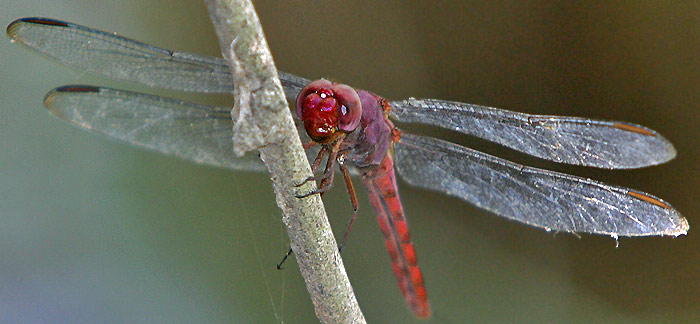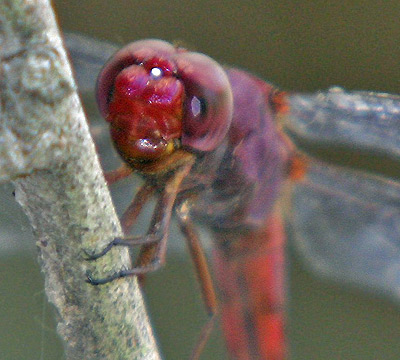
Update, July 06, 2006: I've added my pic of the two individuals in Greg's photo - see below.
Update, July 02, 2006: I've added some comparative pics of other Orthemis, at the bottom.
June 29, 2006; The Halff Brothers Ranch in Frio County, 50 miles south of San Antonio, Texas; Greg Lasley and I are there for Greg to see and photograph Antillean Saddlebags Tramea insularis (we see six males):-
I placed a large branch next to a small stock tank, and within seconds two male Orthemis started to land on it. Due to the obvious difference in color, we assumed one to be Roseate/ferruginea and the other to be Carmine/discolor... They soon started to rest within six inches of each other, but as we approached, they moved to less photogenic spots of the branch. I left Greg in situ and applied my dragonfly herding skills, moving around to the opposite side until they once more sat together on the proper spot - here's one of Greg's pics on them:
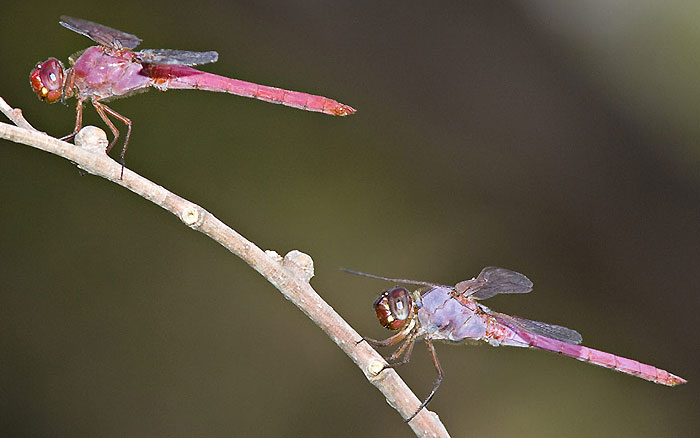
Added July 06 - my camera's version of the same two individuals above:
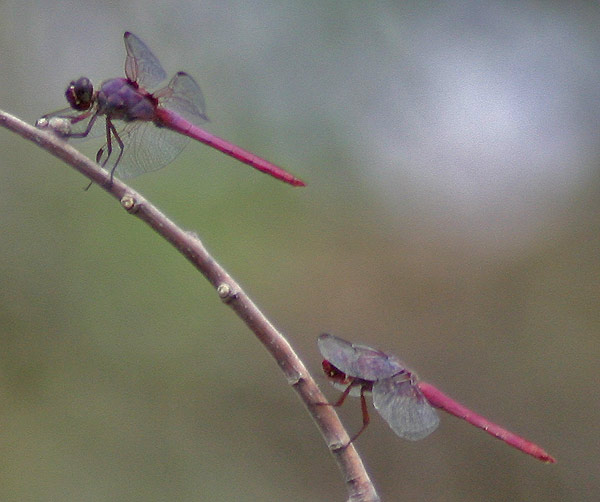
After a few minutes - and a couple of flights by each dragon - it was my turn to take pics, from the far side; here's one of mine:
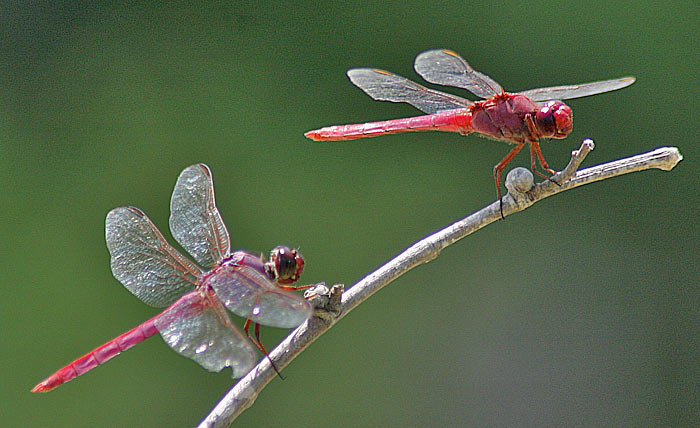
- but there's been a switch, as Greg's presumed "Carmine" is identical (the same individual, I feel) to the presumed "Roseate" in my pic (compare the face and legs)... - ?
There were clearly three different forms of Orthemis in the same spot, interchanging at the prime perch. Later I saw a 2nd deep red Carmine/discolor arrive, making two of the same color around the perch - but now the alpha Carmine/discolor constantly chased away the 2nd one, not allowing it to land anywhere in the perch, let alone within six inches of it. When we had first arrived at this spot, I has seen two males of the typical Roseate/ferruginea type that were constantly sparring, neither allowing the other to perch.
I assume that the intermediate color form is some type of Roseate/ferruginea, but this cannot be confirmed without seeing the underside of the thorax. I come away with the impression that these three types of male did not see the other types as a competitor... ???
Update July 02, 2006:
FYI here's the face of a typical mature male O. ferruginea; note the shining violet patch on the frons (top of the face):
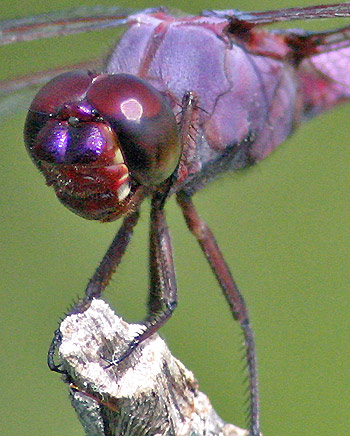
Here is a less-mature male (the immature pattern is still present on the side of the thorax) - yet sporting the fully-developed violet patch on the frons:
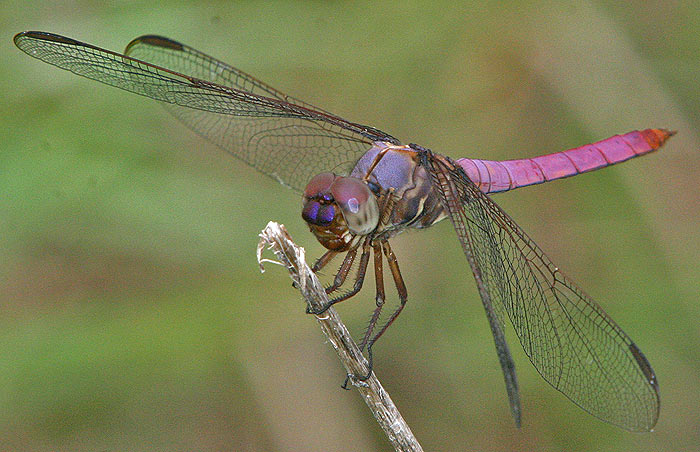
Here's a more-richly-colored ferruginea from San Antonio - again note the metallic violet frons:
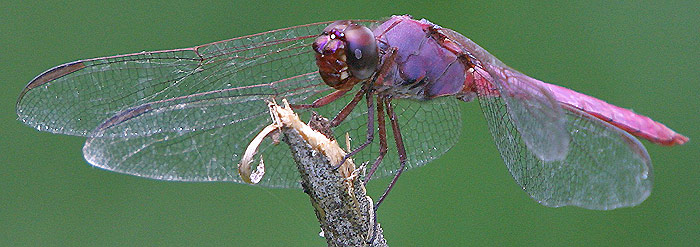
Here's another "Rose-faced" (= intermediate type in top images) Orthemis, from the Valley Nature Center, Weslaco, Hidalgo County on April 09 2006; there is no sign of the violet patches on the frons:
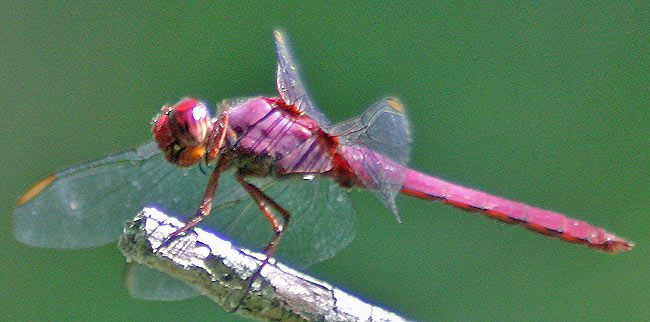
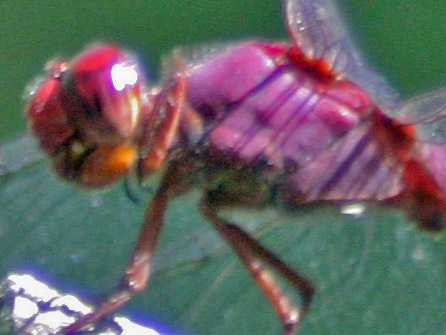
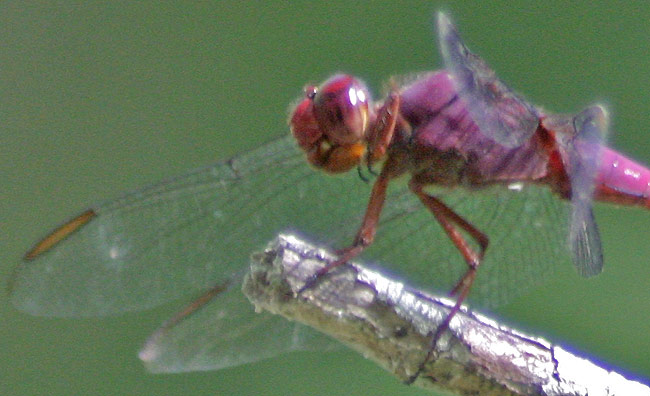
Here's a male discolor-type from Bexar County; note the metallic cherry frons
